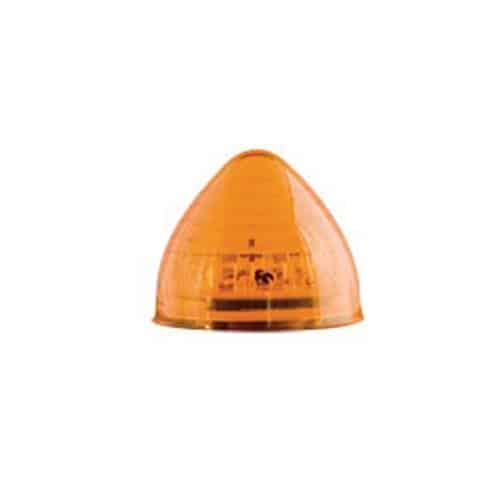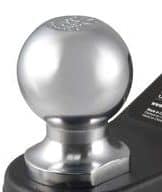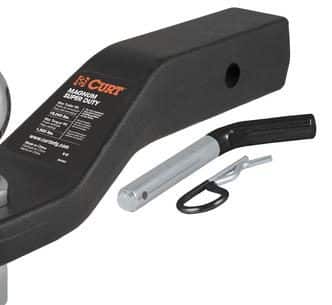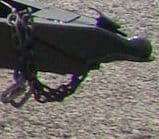Trailer Towing Components: Comprehensive Guide
Table of Contents

One of the things that can be difficult to figure out when researching trailer parts is understanding what type of trailer is being referenced. Depending on the source, you don’t know whether they are talking about tractor-trailer parts or trailer towing components. We want to help you understand all of the parts that go into owning your own vehicle trailer.
If you are thinking about owning your own trailer, it can be important to understand all of the facets that go into that. There are actually quite a few parts that make up your trailer. If you aren’t sure which trailer you want, these different types of trailer comparisons may help out. While most trailers consist of the same or similar parts, there may be a few parts not found here for the specific trailer types. Hopefully, this article will help as you are buying a trailer, replacing parts, or maintaining your current trailer.
What Are The Different Trailer Towing Components?

Let’s get started by diving into all of the different trailer towing components that you may need to know! Keep in mind that some parts have additional layers to them. So we will do our best to show the congruence between each section.
Trailer
What better place to start than making sure everyone is aware that the main body of the trailer is integral to everything else? Whether things are resting in, or attaching to the trailer body…you want to make sure the trailer you purchase is made of solid material you can depend on in any conditions.
Trailer Lighting

Trailer lighting can come stock in a trailer, but more often than not, they just don’t cut it. This is our first stop on the trailer towing components list because this option has a lot to do with the safety of others. Below are a few LED trailer light options to consider. Make sure you also check the legal code for lighting on your trailer.
Trailer Clearance Lights

If your trailer is under 6’ long, you may not need these lights. These lights allow drivers behind you to know the width of your trailer at night. One is placed on each side at around the same height.
Trailer Reflectors

These lights allow your trailer to be seen even when no electrical power is going to it. You can combine clearance lights and reflectors into a single lamp if you choose clearance marker lights.
Trailer Light Bars

These could include a light bar form of brakes or even additional lighting on the side of your trailer depending on the height and length of your trailer.
Trailer Back-up Lights

These lights are hooked up with trailer connectors to allow everyone to know when you are backing up.
Trailer Turn Signal Lamps

No matter the size of your trailer, sticking your arm out the window to signal a turn won’t cut it out there on the road. You need trailer turn signal lights that clearly signal to fellow motorists.
Trailer Wheels & Tires

It’s easy to understand why you need good trailer wheels and tires. The same reason you need good tires on your car! The last thing you want as you are driving down the road is for your trailer to lose traction and make you lose control of your rig.
Trailer Wheel Parts

Bearing Kits
The bearing works with the wheel to create a smooth ride. When you have heavy hauls, these trailer wheel bearings prevent bad wear and tear on other trailer towing components.
Trailer Hubs

The trailer hubs help the wheels stay aligned as well as allow the space for the tires to spin appropriately.
Trailer Drums

Drum brakes are the best style for most trailers. These brakes are not only more durable but are also less expensive as well. These brakes are a type of hydraulic brake.
Trailer Plugs

The standard trailer plug offers a 4 part design that helps with wiring lights. The more electrical options your trailer has, the more ports, or full trailer plugs you will need.
Trailer Hitches

This is the main connector from your vehicle to your trailer. The hitch is what provides the bolting point so that everything stays secure on your trip. Four Winds Trailer offers trailer hitches in KY.
Trailer Jacks

These can also be called tongue jacks or hitch jacks. This is the component that raises a trailer so that the front end is lifted when attaching to your vehicle. The type of trailer jack stands you need for your trailer depends on the weight of the trailer itself.
Trailer Ball

The ball is a part of the hitch system that actually gets encompassed by the trailer when connected to your vehicle. The coupler is linked and then can be locked to this mechanism.
Trailer Ball Mount

The ball mount extends off of the trailer hitch to provide the piece that the trailer will rest on. The trailer ball is on the end of the ball mount where the trailer is secured.
Trailer Hitch Pin & Lock

The hitch pin goes through the ball mount so that your trailer won’t come unhitched when traveling.
Trailer Fenders

Tandem Trailer fenders not only help the trailer to have the look that you want, but they also protect the full-wheel assembly and parts as well.
Trailer Coupler

This is what actually does the connecting on the trailer’s side. Different couplers are available depending on the vehicle and trailer type. The coupler rests on the trailer ball.
Trailer Safety Chains

The safety chains provide another security measure when connecting your trailer to your vehicle. If the trailer comes loose, the chains would hold the tongue up.
Trailer Panels

Trailer panels are the metal pieces used for the sides and floor of your trailer. These pieces make up the trailer body and need to be replaced if rust shows up on your trailer.
Trailer Axles
There are 2 main types of trailer axels, each with its own set of pros and cons. Here is what you need to know about these different styles of trailer axels.
Spring Axel

As you can tell by the name, this type of axel uses springs. These axles are the most popular because they are easy to maintain and replace. You also can get the most bang for your buck when it comes to tire wear on multi-axle trailers.
Torsion Axel

For these torsion axles, rubber cords are used to absorb the shock and suspension from inside the axle tube. The axel rests on a series of these rubber cords always maneuvering back into the central position naturally.
For more information on the comparison between these 2 types of axels, check out this video!
Trailer Break Away Switch

These cables attach from your hitch to your trailer brakes. This will cause your trailer’s brakes to become engaged if it becomes detached.
How Do You Properly Maintain Your Trailer?

Getting the best trailer towing components won’t mean much if they end up rusting or wearing out over the first few years that you have them. When it comes to trailer maintenance, there are things you need to do before each haul, each month, and each year. Let’s check out the ways to properly maintain the integral pieces of your trailer so that it lasts you a lifetime!
Before Each Haul

- Check the Coupler – Make sure no grime or inhibitors to a good connection are underneath the coupler. If the chains are rusted or loose for any reason, now is the time to adjust them.
- Tires – It is imperative to check your tires before every trip given that these are what separates you from the road. Simply filling them with the appropriate amount of air should do the trick for each journey.
- Brakes – Depending on your trailer type, you may have a few styles of brakes. It is important to make sure that whether hydraulic, electric, or anything else, your brakes are up for the trip.
- Break Away Switch & Cables – Simply making sure that these are ready to go before each haul can save the lives of those around you.
- Axles – Making sure these are greased will do the trick before each trip.
Each Month

- The only thing to make sure of the month over month is that everything is properly greased and lubricated.
Each Year

- Tires – Depending on the number of hauls, replacement tires may be in your future. If the tire tread is still legally okay to drive on, rotating your tires is a great way to disperse the weight your tires have been receiving over the last year.
- Bearings – It is good to make sure that your bearings have not altered or worn down over the last year of hauling. Making sure to grease them every year is important.
- Brakes – Make sure to get these serviced by professionals once a year
- Axels – Whether Spring or Torsion, these axels get the brunt of the grime when you travel. Checking to make sure these are clean and rust-free can even happen more than once a year.
- Lights – They have a funny way of letting you know when they need to be addressed. If you can’t guess it, they won’t light up.
Trailer Towing Components Conclusion

While we all may have different trailers, our goals are generally the same. How can we get from point A to point B quickly, safely, and cost-effectively? Making sure that your trailer towing components are up to date, clean, and haven’t broken may not only save you time and money…but can also save lives.
This list is comprehensive but may not include everything you need to know for your specific trailer. We recommend browsing through a catalog as you are looking at trailer parts and making sure you ask the right questions to the company you are purchasing a trailer from. If you have any questions, we are here to help guide you as you are maintaining or purchasing your trailer. Contact us with any questions along the way! We hope this has been helpful.
